Features of an extension of a garage to a house
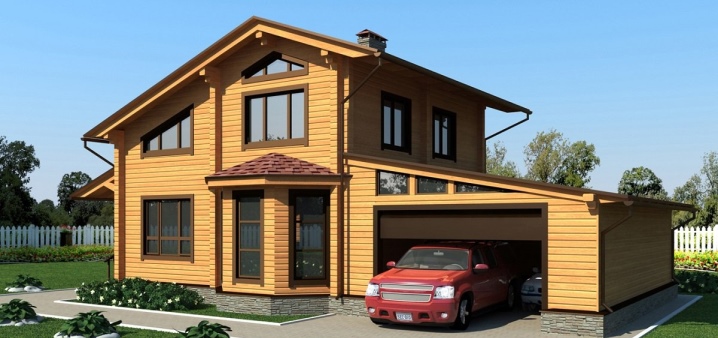
In our country, more and more often you can find garages that were not built into a residential building initially, but adjoin it and, judging by the material and the general form of the structure, were added after the completion of the house as such. This is not just one of the possible, but perhaps the best way to place a garage, but about everything consistently.
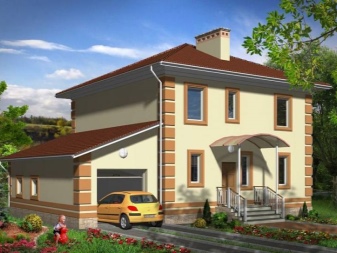

Advantages and disadvantages
The garage attached to the house is not an abstract fantasy of self-taught designers, but a completely practical solution that will more than once prove its feasibility in the future. Judge for yourself what advantages it gives.
- Saving money. One wall for the garage is already ready - this is the outer wall of the house, you will not have to spend money on its construction. Add to this the fact that it is heated from the inside, which means that the garage, even without heating, will no longer be as cold as a stand-alone one, or you can save on the same heating. Whatever communications you bring into the garage, it will also come out cheaper, because it will not be so far to pull them out of the house.
- Saving space. Not every homeowner is lucky enough to have a huge estate - some huddle on several hundred square meters. If there is nowhere to turn around on the site, it would be criminal to scatter free space, erecting a separate building for a car, because the extension is always more compact.
- Convenience. An attached garage in 99% of cases has a direct exit from the house - you can get into it without going outside. This means that you do not have to put on a down jacket in winter if you immediately get into a warm car from a warm house and leave in the underground parking of your company. In addition, the attached garage can be used as a storage for various household utensils, and for the same reason, urgent access to it without any problems will always be convenient, even in severe cold, even in rain and snow.

It is difficult to find the disadvantages of such a solution - more precisely, they are also possible, but unlikely. Someone is afraid that characteristic odors will get into the house, but with properly equipped ventilation, there should not be a frank smell of gasoline in the extension, and in the absence of a draft, the smell will not penetrate through the tightly closed door. It is also naive to think that in the absence of the owners, intruders will enter the house through the garage - if you do not want to steal a car, which is often just the most valuable property, put up a reliable gate, and then they will definitely be no worse protection than building windows.
Perhaps the only logically justified risk is that if one component is deformed, the second will inevitably suffer., but it is unlikely that the preservation of a detached garage will be a consolation factor for a person whose apartment building is lopsided.
In addition, a garage fire can spread to a residential building within minutes, but fire safety must be taken care of to prevent such scenarios.


Requirements
There are conditions, the fulfillment of which is, if not necessary, then highly desirable when adding a garage. Here are the most important ones.
- The garage is almost always attached to the right or left. Adding it to the front will destroy the facade, and the garage located behind the house will be inconvenient to drive out, and the driveway will take up half of the yard.
- The distance to the fence must comply with applicable building codes. Today, there should be at least a meter from the garage to the fence.
- Although an extension almost always weighs less than a home, the foundation depth should be the same. If you ignore this moment, when the soil swells, you run the risk of getting large-scale deformation of both objects.
- In order to avoid the deformations described above, it is best to lay the construction of an extension into the original plan for the construction of the house itself. The common foundation for both segments will provide the building with increased stability, and the soil shrinkage will take place simultaneously and evenly, without excesses.
- Although the exit from the garage directly into the house seems to be the most convenient and logical, in the annex, in addition to the garage doors, it is worth making “human” doors to the street. This is an elementary rule of fire safety, which allows you to urgently evacuate in case of fire anywhere in the room.
- The fire alarm in the attached garage is critical, otherwise the resulting fire could burn the entire house. Timely warning of the owners that there is an accident in the garage will allow people to take urgent measures to save themselves and their property.
- If the house is wooden, that is, built from timber or any other materials of wood origin, that its wall, which is adjacent to the garage, must necessarily be completely insulated from the side of the latter with the help of a non-combustible cladding. It is strictly forbidden to build the garage itself from materials capable of supporting combustion.
- Before building an extension, you must obtain a permit for such an operation.by submitting an updated building plan to the competent authority.
Since the garage is just a part of a residential building, the old registration certificate of the building, in the absence of approval, actually loses its force and it is almost impossible to legally sell such an object - roughly speaking, you do not have documents for it and the deal can always be challenged, which scares off buyers.
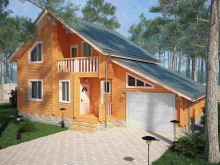
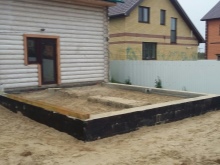

Required tools and materials
The most reliable, capital version of the material is predictably brick - it is both externally ideally suited to a brick building, and is beautiful and non-combustible, and easy to build, and keeps heat well. Alternatively, aerated concrete, foam blocks and gas silicate blocks are used - all these are light materials, each fragment of which has serious dimensions, which also significantly speeds up the construction procedure.
Outside, walls that differ in appearance are faced with brick, but for these needs not so much is needed. In pursuit of ease of installation, SIP panels can also be used, and for speed (but at the expense of reliability and aesthetics), you can build a frame even from iron plates.
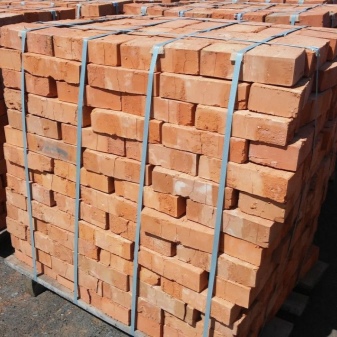

As additional materials, it is worth acquiring concrete and coarse sand for mixing mortar, a coarse reinforcing mesh, formwork boards, and when building from aerated concrete - also special glue.
You can build an object on your own, armed for this with a shovel for digging a foundation pit, hammers and mallets, a tape measure, a plumb line, a building level, trowels, a sanding board and a hacksaw. For mixing concrete, a concrete mixer and a submersible vibrator are very useful.
Working with foam blocks, prepare a planer for cutting off individual "bricks".



Building secrets
Any construction begins with a project on which absolutely all the elements must be shown with an indication of the size - this is the only way you can draw up a drawing correctly, double-check it and implement it yourself. Do not be lazy - even the gate should be shown on the plan, and not just a hole for their installation. If you want to start electrical wiring and water supply - indicate them too, this will help, including when purchasing materials.
And remember: any project first requires a full-fledged drawing up of drawings so that they can be approved by the relevant authorities.
Without approval, you do not have the right to build a garage even on your own site, no matter whether it is a two-story or the most simple one.
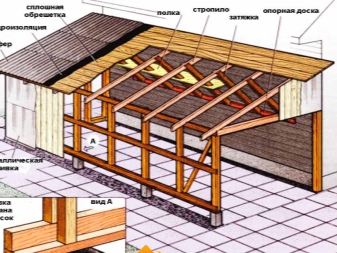
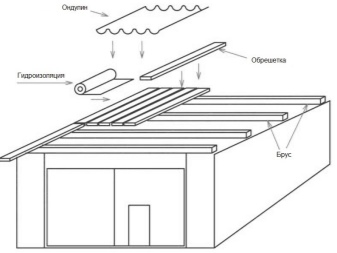
Foundation
Even if the extension is being built noticeably later than the rest of the building, and a separate foundation is laid for it, the type of foundation must still correspond to that which was built under the residential part. The territory planned for construction is cleared, the contour of the foundation is indicated by stuck pegs with a stretched rope, everything is checked again, and already along the contour of the rope they dig trenches or a hole.
Once the garage is attached, its foundation must be connected to the foundation of the house. The bond is performed even before the concrete is poured - most often the reinforcement is simply tied to each other or welded. Alternatively, the wedges of the reinforcement are driven into an existing frame and a second foundation is made along them. Sometimes the space is filled with plastic material - then the foundations are not rigidly connected and each can shrink in its own way. The foundation itself is built according to the classical instructions for the selected type of foundation.

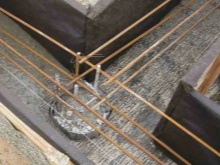

Construction of an extension
Due to its lightness, the garage usually does not require too thick walls, therefore, when erecting from blocks, the material is placed in one row, but it is better to put bricks in one and a half rows. The laying of each subsequent row is carried out with "creeping" onto the seams of the previous row - due to this, it is the wall that is obtained, and not slender piles, which are in no way connected with each other. Laying begins from the corners, but it is important not to ignore regular checks of the evenness of the wall - for this you can use a building level or a vertically suspended rope.
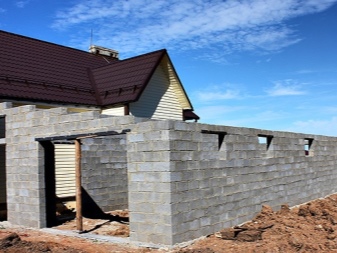
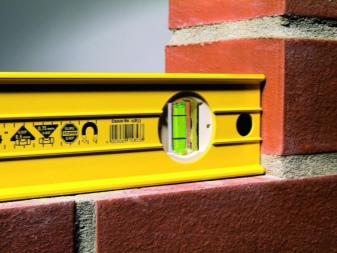
Roof
For an attached garage, an unspoken, but logical standard is a pitched roof directed away from the house - a gable roof would lead to the accumulation of moisture next to the wall of the dwelling. You can cover the garage with any materials - from slate and tiles to a profiled sheet, but you should definitely lay a waterproofing layer under them, otherwise it will not be noticeable from the car that it was in garage storage. When choosing a roofing material, most owners prefer the option that the house itself is covered with - this is how the entire architectural object looks holistic and neat.
In most cases, the attached garage is lower than the house itself, therefore the lean-to garage roof is made even steeper than on the main building - moisture should in no case accumulate at the junction.
For the same reason, a metal corner is mounted along the connection line.
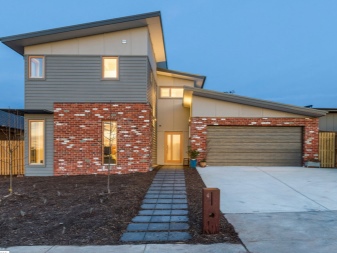
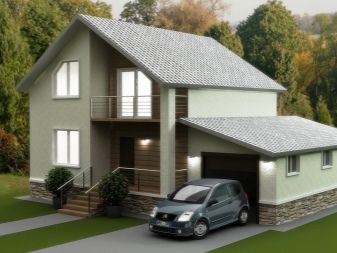
Gates
In most garages, gates occupy almost the entire front wall, therefore, they directly affect the aesthetic perception of the extension. In view of this, it is reasonable to choose the type and material of the gate that will fit into the style of the articulated building and will not spoil the overall appearance of the estate.
Classic swing gates are the easiest to purchase and install, but they have their drawbacks. When opened, they take up a lot of space, which means that part of the free space in front of the garage is actually "assigned" to the extension and cannot be occupied by something useful. According to the results of snowfall, it will not be so easy to open such gates, and this is already a critical situation if the owner, for example, is late for work.
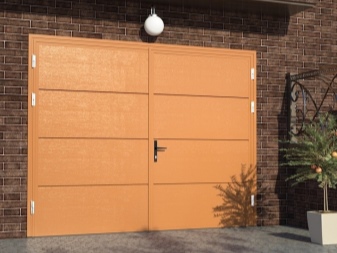
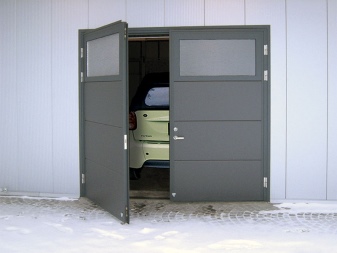
For a more modern alternative, consider roller shutter and sectional doors, which are put more and more often today. They not only do not take up additional space in the open and do not depend on precipitation, but they can also be opened and closed remotely, which greatly speeds up the exit from the garage and parking back into it. Moreover, unlike metal swing shutters, roller shutter and sectional models are made of materials with much higher sound and heat insulation properties.
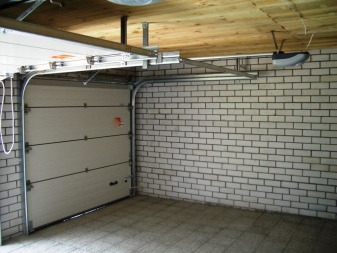
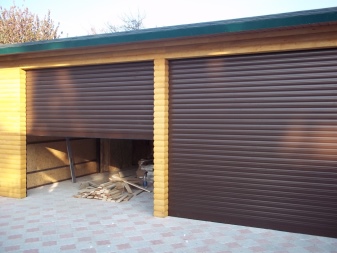
Official registration
The procedure for registering an extension is not as complicated as it might seem, but it is definitely worth going through. To do this, the nearest BTI must submit a package of documents consisting of the following papers (all copies):
- certificate confirming that you are the owner of the house and territory;
- residential building plan;
- proposed project of the future extension;
- technical passport of the currently existing building;
- official design approvals.
Any question regarding the documentation or procedure can be previously asked in the same BTI - there they will tell and prompt everything in accordance with the realities of your region and current legislation. The timing of the approval of the project strongly depends on the workload of the institution, but these are definitely not years or months, but rather they will say in the BTI itself. You can start construction only after obtaining permission, because a project that seems ideal to you may eventually be rejected.

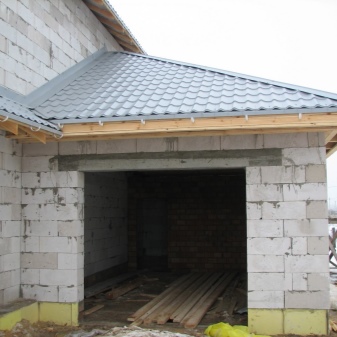
For information on how to attach a garage to a house with your own hands, see the next video.





























































The comment was sent successfully.